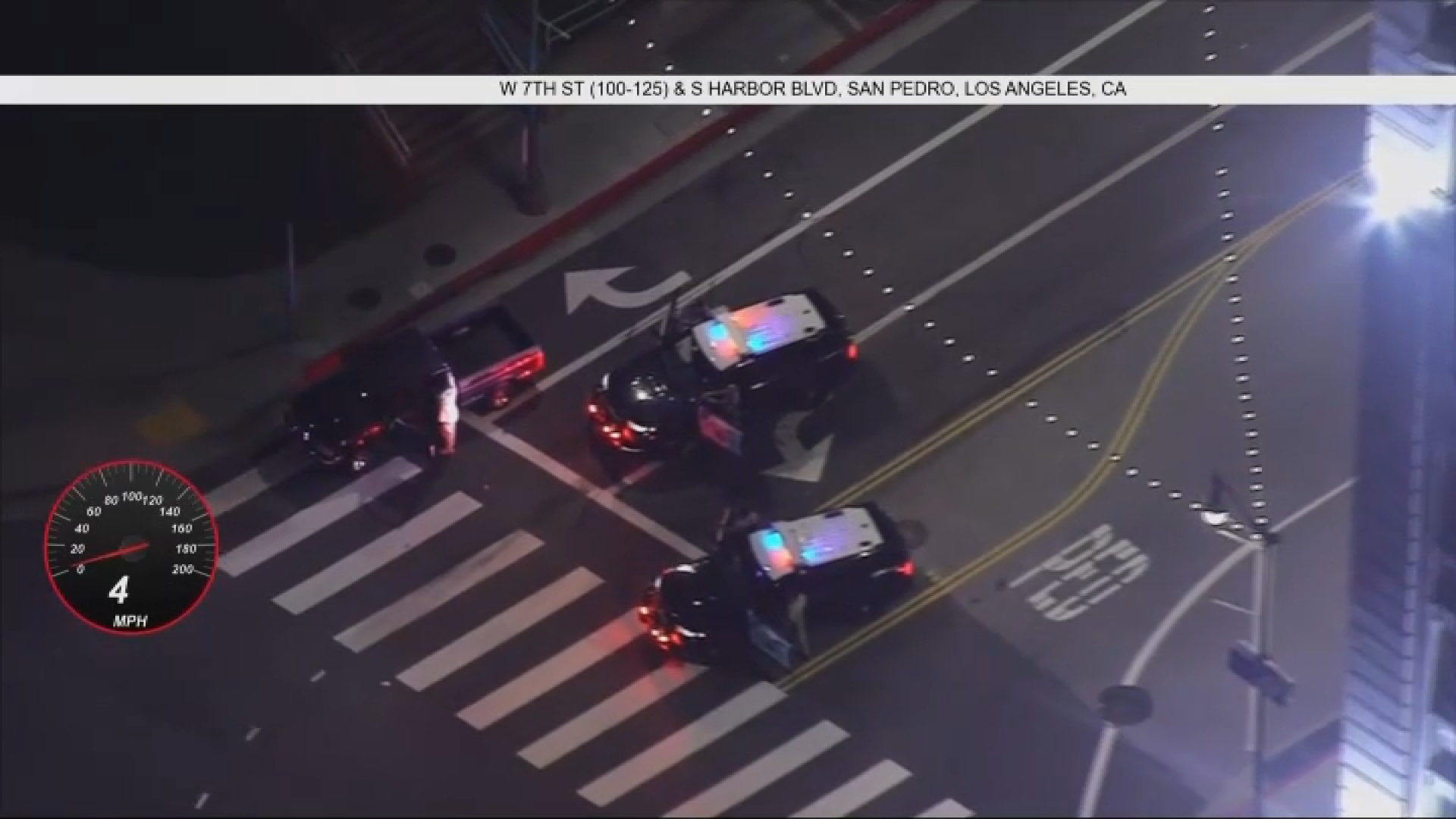Far from warzone violence to inside an industrial park in Carson, disabled Vietnam veteran Leroy Brown has found a new way to serve: operating a sewing machine.
Of course it's not for attacking the enemy, but it is to help American troops and even save lives.
Brown is part of a team of vets stitching together the harnesses that carry newly-developed sensors to measure the concussive blasts from IEDs, or Improvised Explosive Devices. During the Iraq war, IEDs became the biggest threat to troops on the ground and in convoys, and remain a daily warzone hazard in Afghanistan.
IEDs are a major cause of what's called traumatic brain injury. Some 33,000 U.S. military cases of TBI were diagnosed last year alone, though TBI is not always immediately apparent.
The sensors were developed for the Pentagon by the Research Institute at Georgia Tech. The harnesses for carrying them were devised by S.O. Tech, a Carson-based company founded by Army veteran Jim Cragg, who still serves as a Major in the Reserves.
"I know that when I was in Afghanistan and an IED detonated in my area, my first reaction was to look down. If I'm not bleeding, if there are no holes in me, I'm fine," Cragg recalled. Now he knows better.
The damage done by IEDS can be invisible: concussions that, with adrenaline pumping, a soldier maybe unaware of, or may not want to acknowledge, and thus that goes untreated.
The data compiled by the sensors will go into the GI's medical record to help with diagnosis and treatment, and ultimately be compiled into data bases for research into ways of preventing
and treating TBI.
Local
Get Los Angeles's latest local news on crime, entertainment, weather, schools, COVID, cost of living and more. Here's your go-to source for today's LA news.
Which brings us back to Brown at his sewing machine in the S.O. Tech fabrication room. It's rewarding work to be helping soldiers, he said.
"May not help the ones right away this moment," Brown said. "But it will help the ones in the future."
When NBC4 visited the production area, Brown was joined in his mission by eight other disabled vets. All have had to overcome adversities during and after their service, and found themselves seeking help at the VA.
One of them was 26-year-old Omar Medina. He suffered TBI while serving in the infantry in Iraq, where he was exposed to half a dozen IED blasts.
Medina remembers his VA counselor telling him about a veteran who had a business and wanted to help other vets.
That would be Cragg, a gung-ho paratrooper who never forgot the sewing class he took as a schoolboy, returning to civilian life brimming with ideas for harnesses, pouches, kits and other combat grade gear made with fabric.
With S.O. Tech growing, Cragg saw the chance to help struggling vets struggling get back on their feet.
Several admitted they were not initially thrilled at the idea of working at a sewing machine. But Morris Thompson has found it to be "good therapy. It keeps me from thinking too much."
The bigger incentive is the chance to help the current generation in the armed forces.
"It's a fantastic feeling that we're saving lives," said Henry Hartwell, who discovered he had a knack for sewing and now serves as the team's foreman.
"I went through a whole lot of tough years," said Alonzo Day. "Finally, I'm starting to get myself together.
For Walter Jacks, it's become part of "starting over again."
Said Lawrence Jacobs: "It's helpful to any veterans who want to do better for themselves, and make themselves better in society."
From their experience, they know firsthand that troops have to carry a lot of gear, and may be reluctant to add a layer of sensors. Fred L. Stanly, who served in the 82nd Airborne, offered
the kind of fatherly advice that can only come from a veteran.
"Whoever serves, they should have this unit," Stanley said.
It takes years of practice to reach the speed of an experienced seamstress and while S.O. Tech does employ seamstresses for other products it produces, Cragg wants the TBI sensor
harnesses done by vets, even if it takes a few more man-hours.
"It's such an honor and a privilege to work with these guys," Cragg said. "The whole idea is to build up their self-esteem. And make them feel good about what they're doing. And give them that kick so that they feel they can get back out in society and get a job and really feel like they're contributing again."
Some of the men now working at S.O. Tech had been homeless in recent years, and fighting addictions. But for many, things have changed.
"Now I'm in a nice place," said Lawrence Jackson.



